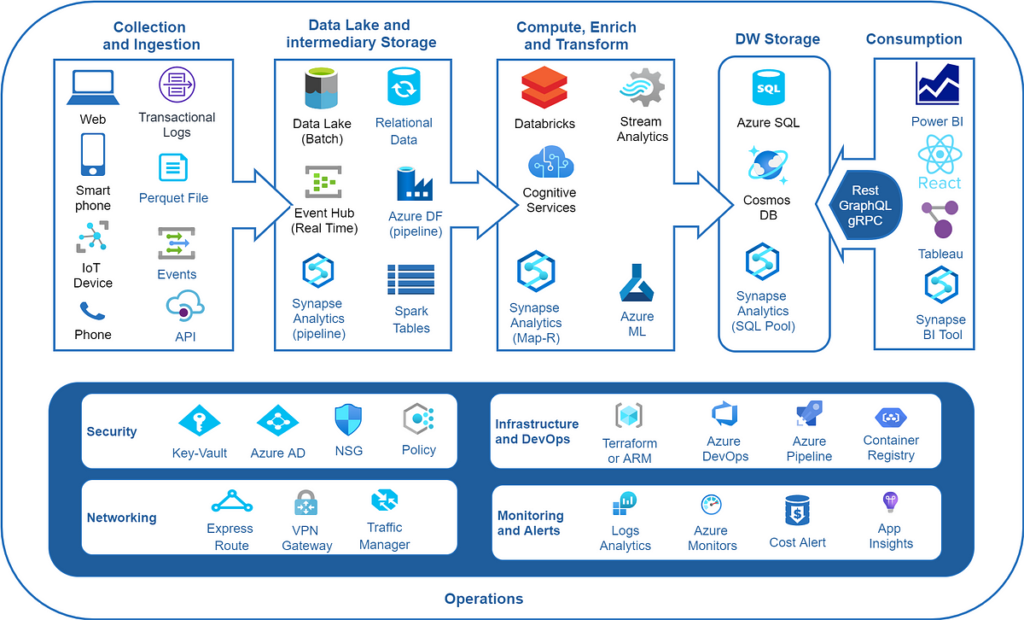
I. Introduction
Welcome to the realm of data engineering, where the showcase of your skills is as vital as the skills themselves. In this article, we’ll explore the art of building a stellar data engineering portfolio that not only highlights your technical prowess but also captivates potential employers.
II. Understanding the Purpose of Your Portfolio
A. Defining Your Goals
Crafting a purpose-driven portfolio starts with clarifying your career goals. What do you want to achieve? Are you aiming for a specific role or industry?
B. Tailoring for Your Audience
Your portfolio should resonate with your target audience. Tailor it for the companies you aspire to work for and the roles you aim to fill.
III. Choosing the Right Projects
A. Quality Over Quantity
When selecting projects to showcase, prioritize quality over quantity. Each project should tell a unique story about your skills and problem-solving abilities.
B. Diverse Range of Skills
Demonstrate a diverse skill set through your projects. Showcase proficiency in various tools, languages, and frameworks relevant to data engineering.
IV. Crafting an Engaging Project Showcase
A. Storytelling with Impact
Present each project as a narrative. Explain the problem, your approach, and the impact of your solution. Engage your audience with a compelling story.
B. Visual Appeal Matters
Incorporate visuals such as charts, graphs, and diagrams to make your projects visually appealing. A picture is worth a thousand words, especially in the data world.
V. Displaying Technical Proficiency
A. Code Samples and Explanations
Include snippets of your code accompanied by explanations. Showcase your coding style, adherence to best practices, and problem-solving skills.
B. Performance Metrics
Quantify your achievements. Highlight performance improvements, optimization, and any measurable impact your work has had on data processing or analysis.
VI. Highlighting Collaboration and Communication Skills
A. Team Projects and Contributions
If you’ve worked on team projects, emphasize your collaboration skills. Discuss your role, challenges faced, and how you overcame them as a team.
B. Clear Documentation
Effective communication is key. Include well-documented processes, making it easy for others to understand and reproduce your work.
VII. Continuous Learning and Growth
A. Showcase Learning Projects
Demonstrate your commitment to continuous learning by including personal or side projects. Highlight the technologies you’ve taught yourself and the challenges you’ve overcome.
B. Certifications and Training
List relevant certifications and training programs. This not only showcases your expertise but also your dedication to staying current in the ever-evolving field of data engineering.
VIII. Creating an Interactive Portfolio
A. Incorporating Links and Demos
Make your portfolio interactive by providing links to live projects, demos, or GitHub repositories. Let potential employers experience your work firsthand.
B. Engage with Open Source Contributions
If applicable, mention any contributions to open-source projects. This not only showcases your skills but also your commitment to community-driven development.
IX. Optimizing for SEO: Making Your Portfolio Discoverable
A. Keyword Optimization
Integrate relevant keywords throughout your portfolio. This ensures search engines recognize your skills and make your portfolio discoverable to potential employers.
B. Utilizing Descriptive Titles and Alt Text
Give your projects and images descriptive titles and alt text. This not only improves accessibility but also contributes to better SEO.
X. Keeping Your Portfolio Updated
A. Regularly Add New Projects
Keep your portfolio dynamic by consistently adding new projects. This demonstrates your commitment to growth and staying at the forefront of technology.
B. Updating Skillsets
As your skills evolve, update your portfolio accordingly. Ensure potential employers see your latest achievements and capabilities.
XI. Testimonials and Recommendations
A. Including Client or Colleague Feedback
If available, include testimonials or recommendations from clients or colleagues. This adds a human touch to your portfolio, providing evidence of your professional relationships.
B. LinkedIn Recommendations
Cross-promote by linking your LinkedIn profile with recommendations. It adds credibility and allows potential employers to explore your professional network.
XII. Balancing Detail and Brevity
A. Concise Project Descriptions
While detail is essential, ensure your project descriptions are concise. Capture the essence of your work without overwhelming the reader.
B. Providing In-Depth Information When Necessary
For key projects, provide in-depth information. This could include challenges faced, innovative solutions, or unique aspects of the project that set it apart.
XIII. Mobile Responsiveness
A. Ensuring Accessibility Across Devices
In an era of diverse devices, ensure your portfolio is responsive. Potential employers might view it on desktops, laptops, tablets, or smartphones.
B. User-Friendly Navigation
Optimize navigation for a seamless user experience. A clutter-free, easy-to-navigate portfolio is more likely to leave a positive impression.
XIV. Seeking Feedback and Iterating
A. Soliciting Constructive Criticism
Don’t be afraid to seek feedback. Constructive criticism helps refine your portfolio, ensuring it aligns with industry expectations.
B. Continuous Improvement
Use feedback to iterate and enhance your portfolio. Treat it as a living document that evolves with your career.
XV. Conclusion
In the competitive landscape of data engineering, a stellar portfolio is your passport to opportunities. Craft it with care, balancing technical depth with engaging storytelling, and watch as doors open to new and exciting possibilities.
FAQs: Frequently Asked Questions About Building a Data Engineering Portfolio
- Q: How many projects should I include in my portfolio?
- A: Quality over quantity is key. Include projects that showcase a diverse range of skills and tell compelling stories.
- Q: Should I include personal projects in my portfolio?
- A: Absolutely! Personal projects demonstrate your passion for continuous learning and can set you apart from other candidates.
- Q: How often should I update my data engineering portfolio?
- A: Regular updates are crucial. Aim for quarterly reviews to add new projects, update skills, and ensure your portfolio remains current.
- Q: Can I include non-technical skills in my portfolio?
- A: Yes, include skills like collaboration, communication, and problem-solving. They are highly valued in the workplace.
- Q: Is it necessary to have an interactive portfolio?
- A: While not mandatory, an interactive portfolio with links, demos, and engaging visuals can leave a lasting impression on potential employers.